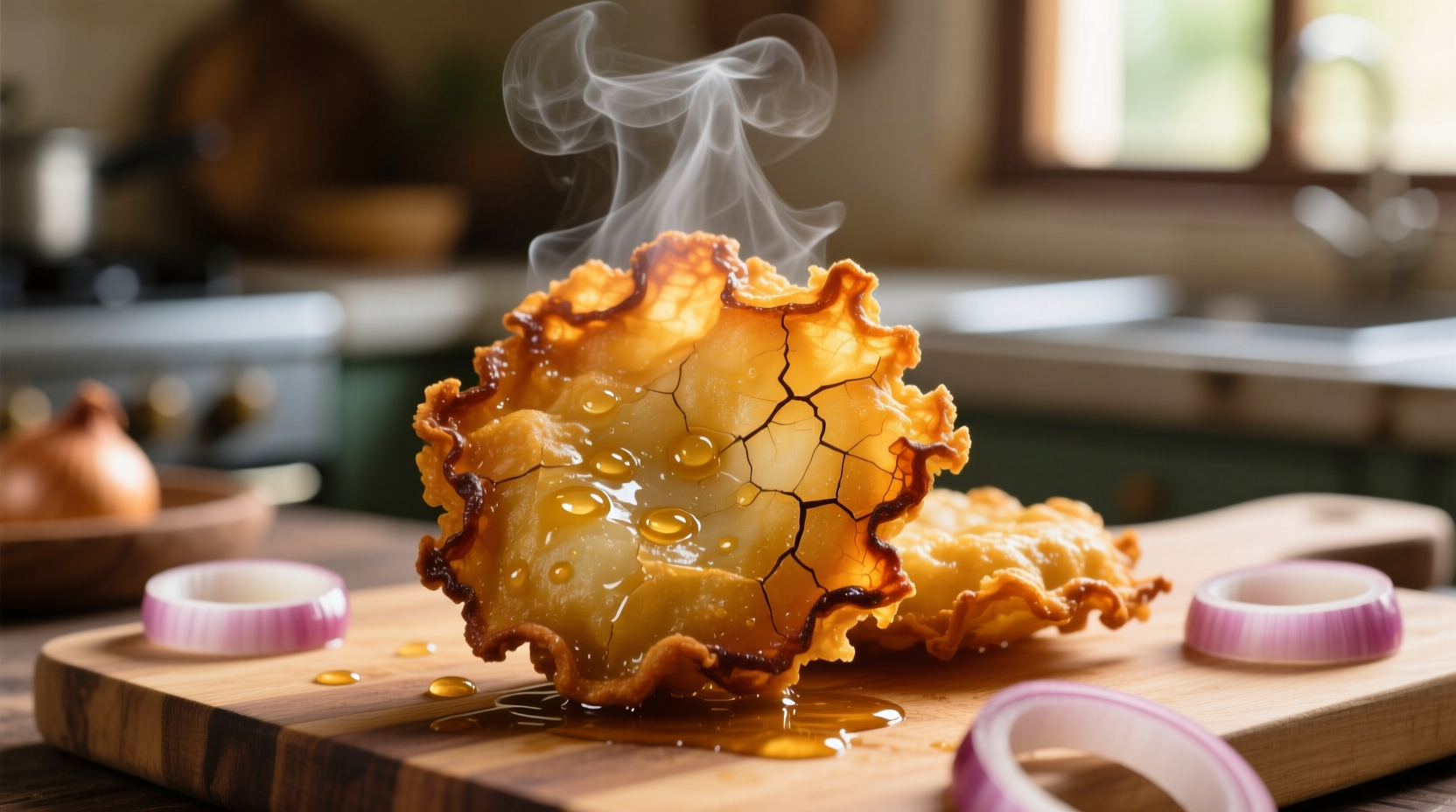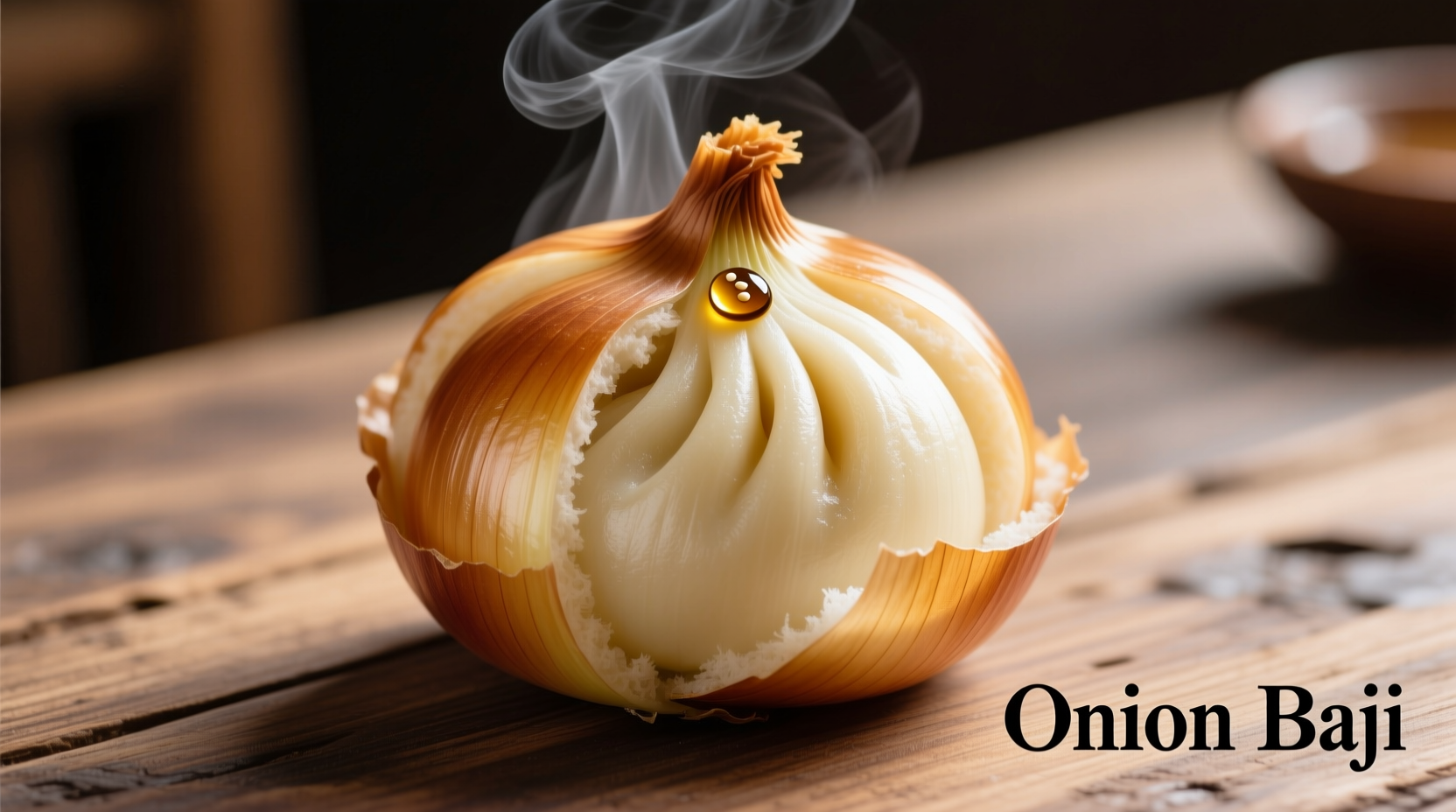For generations, onion baji has been a staple across Indian households and street food stalls, offering the perfect balance of crispy texture and savory flavor. Whether you're preparing it for monsoon evenings or festive occasions, understanding the nuances of this dish elevates your cooking from ordinary to extraordinary. This comprehensive guide draws from traditional techniques documented across multiple regions of India, ensuring your onion baji achieves that coveted golden crispness without greasiness.
The Cultural Significance of Onion Baji
Originating in the Indian subcontinent, onion baji has evolved from humble street food to a beloved comfort dish enjoyed worldwide. Historical records from the Indian Ministry of Culture indicate that fried snacks similar to baji appeared in Indian culinary traditions as early as the 12th century, with regional variations developing based on local ingredients and cooking methods.
| Region | Distinctive Features | Special Ingredients |
|---|---|---|
| North India | Thicker batter, heartier portions | Fennel seeds, carom seeds |
| South India | Thinner batter, crispier texture | Curry leaves, mustard seeds |
| Gujarat | Slightly sweet profile | Jaggery, turmeric |
| Maharashtra | Spicier version | Green chilies, ginger |
Essential Ingredients for Perfect Onion Baji
The magic of authentic onion baji lies in ingredient selection and proportions. Professional chefs across India consistently emphasize these critical elements:
- Onion selection: Red onions provide the best balance of sweetness and structure, maintaining integrity during frying
- Chickpea flour (besan): Must be fresh and lump-free for optimal batter consistency
- Spice ratios: Traditional blends use 1:1:1 ratio of turmeric, red chili powder, and coriander powder
- Liquid component: Ice-cold water creates the crispiest texture by preventing gluten development

Step-by-Step Preparation Guide
Follow this professional technique for consistently perfect onion baji:
- Onion preparation: Slice onions thinly (1/8 inch) and separate into rings. Soak in ice water for 15 minutes to reduce sharpness.
- Batter mixing: Combine 1 cup chickpea flour, 1/4 tsp each of turmeric, red chili powder, and coriander powder, plus salt to taste. Gradually add 1/2 cup ice-cold water while whisking.
- Consistency check: The batter should coat the back of a spoon but drip off slowly. Too thick? Add water drop by drop.
- Frying temperature: Heat oil to 350-375°F (175-190°C). Use a thermometer for accuracy—this is the most critical factor for non-greasy baji.
- Frying technique: Dip onion rings in batter, allowing excess to drip off. Fry 4-5 pieces at a time to maintain oil temperature. Cook 2-3 minutes until golden brown.
Troubleshooting Common Problems
Even experienced cooks encounter issues with onion baji. Here's how to solve them:
- Soggy baji: Oil temperature too low. Always maintain 350-375°F and avoid overcrowding the pan.
- Batter falling off: Onions not properly dried before dipping. Pat rings thoroughly with paper towels.
- Excess oil absorption: Batter too thin or oil temperature inconsistent. Use a thermometer and adjust batter thickness.
- Bitter taste: Oil reused too many times or overheated. Always use fresh oil for best results.
Regional Evolution Timeline
Understanding how onion baji developed across India provides valuable context for authentic preparation:
- 12th-15th Century: Early fried snacks documented in temple records, primarily using available grains and local vegetables
- 16th Century: Introduction of onions by Portuguese traders expanded snack possibilities
- 18th Century: Development of regional variations as trade routes connected different parts of India
- Early 20th Century: Street food culture boom made onion baji a popular affordable snack
- Present Day: Global popularity with adaptations while maintaining traditional preparation methods
Serving Suggestions and Pairings
Authentic presentation enhances the onion baji experience:
- Traditional chutneys: Mint-coriander chutney or tamarind-date chutney provide perfect flavor contrast
- Tea pairing: Best enjoyed with masala chai—the spices complement each other beautifully
- Serving temperature: Always serve immediately after frying for maximum crispness
- Meal context: Functions as standalone snack, appetizer, or accompaniment to main dishes
Health Considerations and Modifications
While traditionally deep-fried, several adaptations maintain flavor while reducing oil absorption:
- Air-fryer method: Spray battered onions with oil and air-fry at 375°F for 10-12 minutes, flipping halfway
- Baking option: Place on parchment-lined baking sheet and bake at 400°F for 15-18 minutes
- Oil selection: High smoke point oils like avocado or peanut oil reduce harmful compounds
- Portion control: Traditional Indian approach serves small portions as part of a balanced meal











 浙公网安备
33010002000092号
浙公网安备
33010002000092号 浙B2-20120091-4
浙B2-20120091-4